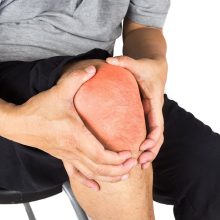Discover How Alkaline Eating Promotes Health and Longevity
When Australian business mogul Elle Macpherson turned 54, she noticed changes in her body that she didn’t like.
Ellie told New Beauty magazine that she began to feel lethargic, less energetic, and wasn’t sleeping well. She had also put on weight around her waist and hips.
This was hard to accept for a woman once referred to as “The Body” because of her supermodel figure. That’s when she chose to maintain a plant-based “alkaline” diet developed by a London nutritionist.
Ellie is now eating foods that put her body in an alkaline state versus acidic. These foods include kale, sprouts, spinach, and other leafy greens, plus quinoa and amaranth, and healthy fats such as avocado, olive oil, and coconut oil.
The new diet brought dramatic changes. She noticed significant improvements in her complexion and skin. She lost weight, her digestion improved, and she felt more emotionally balanced.
The Science Behind Alkaline Eating
Ellie was smart in eating alkaline foods. It made her body feel great.
But it does more than make you feel and look great. It can have a profound impact on your overall health.
When your body is too acidic, you open yourself up for illness. But when your body is in a slightly alkaline state, you can avoid a rash of problems – joint stiffness, weak heart, poor digestion, sore muscles, constipation, blood sugar imbalances, sluggish immunity. . . and the list goes on.
Numerous studies have highlighted the importance of acid-alkaline balance in promoting health and longevity. For instance, a study published in the Journal of Environmental and Public Health found that diets rich in alkaline-forming foods – like what Ellie is now eating – were associated with lower risk of chronic diseases such as hypertension, diabetes, and cardiovascular disease.
When we eat the typical American diet of highly processed foods, fast foods, foods with added sugars, fake sugars, lots of red meat, and stimulants like caffeine and alcohol, we put our bodies in an acidic state.
When our bodies are more acidic than alkaline, we get sick. An acidic body leads to degenerative diseases, including cancer, cardiovascular disease and hypertension, osteoporosis, obesity, premature aging, diabetes and many others.
Here’s what prominent doctors have to say about this:
47-time nominated Nobel Prize-Winner Dr. Otto Heinrich Warburg declared, “Disease cannot thrive in an alkaline body.”
In the case of cancer, numerous studies have shown that cancer or abnormal cells thrive in an acidic environment. But cancer cells would actually self-destruct in a healthy alkaline environment.
Dr. William Howard Hay wrote in his ground-breaking book, A New Health Era, “All disease is caused by auto-toxification (self-poisoning) due to acid accumulation in the body.”
Similarly, Dr. Theodore A. Baroody, author of Alkalize or Die, warned against the consequences of excess acidity, linking it to countless illnesses. He remarked, “The countless names of illnesses do not really matter. What does matter is that they all come from the same root cause: Too much acid in the body!”
According to research published in the American Journal of Respiratory and Critical Care Medicine, high acid levels have even been shown to trigger an asthma attack. When acid levels increase in the lung, it can prompt inflammation in the bronchial airways, thus triggering the attack.
Understanding the Acid-Alkaline Balance
Before delving into the benefits of alkaline eating, let’s first understand the concept of pH balance in the body.
The letters “pH’ stand for “potential of hydrogen.” The pH scale measures the acidity or alkalinity of a substance, ranging from 0 (100% acidic) to 14 (100% alkaline), with 7 being neutral.
Our bodies strive to maintain a slightly alkaline pH level, typically ranging between 7.35 and 7.45, to support optimal functioning of bodily systems. So a healthy person with perfectly balanced pH has a reading of about 7.4 in the blood and 7.0 in the tissues.
When we consume acidic foods (meat, dairy, processed foods, soft drinks, alcohol, and the like) and engage in lifestyle habits that contribute to acid overload, such as stress and lack of exercise, our body’s pH balance can become disrupted. This imbalance sets the stage for a myriad of health issues, including immune deficiency, premature aging, joint pain and stiffness, weak bones, low energy, and many serious illnesses.
How Our Body’s pH Balance Shifts from Birth to Now
When you were born, your body’s pH was slightly alkaline. That was good.
But as you grew and your body started churning out those 100 trillion new cells to replace your old or damaged ones, things began to change. Each time your body goes through this cellular turnover process, it’s like a mini factory working overtime to keep you ticking along.
Now here’s where it gets interesting. As those shiny new cells start to form, they need fuel to keep them going – and that fuel comes from the nutrients in the food you eat.
When your cells burn through those nutrients, they leave behind a highly acidic ash. At that point, your body needs to deal with this acidic ash.
Over time, as this acidic ash builds up in your system, it can throw off your body’s pH balance out of whack, tipping the scales towards acidity.
When your body’s pH becomes too acidic, it’s like a red flag waving frantically, signaling trouble ahead. Your cells struggle to function optimally, your energy levels plummet, and you become more susceptible to a whole host of health issues.
But there’s a solution. It all starts with paying closer attention to what you’re putting into your body. By opting for alkaline-rich foods, you can help offset the acidic onslaught and keep your body pH in check.
Alkaline Foods vs. Acidic Foods
Alkaline foods are those that have an alkalizing effect on the body when metabolized, helping to restore pH balance and promote health. These include organic fruits and vegetables, organic leafy greens, nuts, seeds, legumes, whole grains, herbs and spices, chlorella, spirulina, and fermented foods.
On the other hand, acidic foods are those that produce acid when metabolized, contributing to acid overload in the body, especially when eating in excess. These include processed foods, refined sugars, caffeine, alcohol, dairy products, and animal proteins.
But just to be clear, it doesn’t matter if the food is alkaline or acidic before you eat it. It’s what happens to the food once you digest it.
In other words, some foods may be classified as acidic before you eat them but end up having an alkaline effect on your body after it’s digested.
For example, lemons and limes are acidic before you eat them. But once digested they produce an alkalizing effect on your body.
Foods like milk and cheese, however, are alkaline before you consume them. But once digested, they become acidic.
So by incorporating more alkaline foods into our diets and reducing our intake of acidic foods, we can support our body’s natural detoxification processes, boost immunity, and enhance overall vitality.
Benefits of Eating Alkaline Foods
When you eat alkaline foods, your body can reap many health benefits:
- Promotes bone health and reduces risk of osteoporosis because alkaline diets provide minerals that help build bone density. Acidic diets leach minerals from bones.
- Reduces muscle wasting and builds lean muscle by helping counteract acidic byproducts of muscle breakdown. This preserves muscle mass as we age.
- Boosts growth hormone levels which is essential for growth, metabolism, and tissue regeneration. Alkaline diets also boost growth hormone secretion.
- Improves kidney function. Kidneys play a major role in pH balance. Limiting acidic foods protects kidney health and reduces risk of kidney stones.
- Supports neurological health by helping neutralize acids that can lead to inflammation in the brain associated with cognitive decline.
- Slows aging process by providing antioxidants to counteract acidic metabolic waste that accelerates aging on a cellular level.
- Strengthens immune function by neutralizing acids that can dampen immune response and inflammation needed to fight invaders.
- Increases energy levels by delivering electrolytes, minerals, and antioxidants that help increase oxygenation and boost cellular energy production.
- Improves skin health. Skin’s collagen network can be damaged by dietary acids, while an alkaline balance allows skin to regenerate and maintain youthful elasticity.
- Reduces joint inflammation. Acidic diets contribute to an inflammatory response in joints and connective tissues leading to conditions like arthritis.
- Lowers risk of nutrient deficiencies. Acidic diets increase loss of certain minerals like calcium, magnesium, and potassium through urinary excretion.
- Helps maintain ideal weight by promoting fat burning and making it easier to maintain a healthy body composition. Acidic diets encourage fat storage.
Beyond Food: Other Sources of Acidity
It’s not just about what we eat though. There are other sources of acid harmful to our bodies that go beyond what we consume:
- Food additives and chemicals – Artificial and synthetic acid-based residues throw off our body’s natural pH balance.
- Prescription drugs – Besides their many side effects, many prescription drugs are designed to be acidic to aid absorption, thereby raising acidity, and can remain in the body long after one stops taking the drug.
- Home furnishings – Some chemicals in home furnishings can release acid-based gases such as formaldehyde, toluene, benzene, and xylene.
- Air pollution – Contains acidic compounds like sulfur and nitrogen oxides that when inhaled raise the body’s acidity.
- Acid rain – Caused by air pollution, acid rain can contaminate water and food sources leading to increased acidity when consumed.
- Pesticides – Many non-organic fruits and vegetables contain extremely high levels of pesticides that bombard our cells.
- Physical exercise – Intense exercise causes lactic acid buildup in muscles, temporarily increasing acidity until the lactate is cleared.
- Stress – Emotional, mental, or physical stress triggers the release of acidic hormones like cortisol into the bloodstream which increases the body’s overall acid load.
Signs your body is out of pH balance
Ever feel like something’s just not right with your body, but you can’t quite put your finger on it? Well, it might be time to take a closer look at your pH balance.
Chowing down on too many acidic foods – think processed snacks, sugary treats, soda, and animal proteins – can definitely throw off your body’s pH balance. Here are some signs that your pH levels may be too acidic . . .
You just feel “off” for no reasons. Things like low energy brain fog, mood swings, feeling irritable and anxious, and constantly getting sick could stem from your diet being too acidic.
Acidic pH also makes you sore and achy everywhere. Your muscles and joints just hurt for any little reason. It’s like you aged 30 years overnight!
Ever notice weird skin stuff – like rashes, eczema, and dry patches? They often appear when your pH is off. Acidic skin is unhappy skin.
Bad breath and teeth issues also signal excess acid. The bacteria feeding on that acidic environment in your mouth can create gnarly odors and cavities.
And, of course, upset stomach, bloating, acid reflux and other digestive complaints are a big red flag your pH balance is out of whack. Acid simply doesn’t agree with your GI tract.
If any of these symptoms sound familiar, it might be time to dial back on the acidic foods and focus on bring your body back into balance with alkaline foods like leafy greens, healthy fats, and fermented foods. You’ll feel the difference in energy, immunity, and overall vitality.
Test Your pH to Ensure Acid-Alkalinity Balance
Testing your pH levels at home can provide valuable insights into your body’s acid-alkaline balance.
Note: Your urine is slightly more acidic than saliva because urine is continually excreting excess acid in order to balance your body’s pH. Also, the urine excretion of acids will vary throughout the day depending on your daily activities, foods, and other factors. That’s why testing your saliva is a more accurate measure of your pH.
Here’s how to do it effectively using both urine and saliva.
Urine pH Testing:
- Start by obtaining pH test strips from your local pharmacy or online.
- Collect a small sample of your first-morning urine in a clean container.
- Dip one end of the pH test strip into the urine for the specific time indicated on the packaging.
- Remove the strip and shake off any excess urine.
- Compare the color the strip to the provide color chart to determine your urine pH level.
- Urine pH can range from 4.5 to 9.0, with an ideal range between 6.0 and 7.0. Morning is the best time to test your urine. Urinary pH that ranges between 6.0 and 6.5 first thing in the morning means your body is functioning within a healthy range. An evening urine pH between 6.5 and 7.0 is also normal.
Saliva pH Testing:
- Rince your mouth with water to remove any food particles or debris that could affect the results.
- The best time to test your saliva pH is one hour before eating and two hours after eating.
- Spit a small amount of saliva into a clean spoon or container.
- Dip one end of a pH test strip into the saliva for the specified time indicated on the packaging.
- Remove the test trip and shake off any excess saliva.
- Compare the color of the strip to the provided color chart to determine your saliva pH level.
- Ideally, your saliva pH should fall within the range of 6.6 to 7.5. A reading below 6.4 indicates you’re too acidic, which is what you don’t want. A pH reading of 7.1 to 7.5 means your body is more alkaline, which is what you do want.
Remember to record your pH levels over several days or weeks to establish patterns and trends. If you consistently find that your pH levels are outside the optimal range, consider consulting with a healthcare professional for further evaluation and guidance on achieving optimal acid-alkaline balance.
The Key to Revolutionizing Your Well-Being
Achieving and maintaining a healthy acid-alkaline balance is not just a trendy buzzword – it’s a crucial aspect of overall well-being that can have a profound impact on your health and vitality.
As we’ve explored throughout this article, the foods we eat, the lifestyle choices we make, and even our body’s natural processes all play a role in shaping our pH levels.
So, as you embark on your journey towards better health, keep these key points in mind:
- Nourish Your Body. Opt for a diet rich in alkaline-forming foods like organic fruits, vegetables, and whole grains, while minimizing acidic choices like processed foods, soft drinks, and sugary treats.
- Stay Hydrated. Drinking plenty of water helps flush out toxins and supports optimal pH balance, so be sure to stay hydrated throughout the day.
- Move Your Body. Regular exercise not only boosts physical fitness but also helps regulate pH levels and promote overall well-being.
- Manage Stress. Chronic stress can wreak havoc on your body’s acid-alkaline balance, so prioritize stress-reducing activities like meditation, yoga, or spending time in nature.
- Listen to Your Body. Pay attention to how your body responds to different foods and lifestyle choices and adjust according to support pH balance.
- Seek Professional Guidance. If you’re unsure where to start or need personalized guidance, don’t hesitate to consult with a healthcare professional or nutritionist who can help you develop a tailored plan for achieving and maintaining a healthy acid-alkaline balance. That’s what Ellie Macpherson did and look at how it changed her life for the better.
Remember, small changes can yield big results when it comes to optimizing your pH levels and unlocking the full potential of vibrant health and vitality.
So, here’s to taking charge of your health and embracing the journey towards balancing living!







